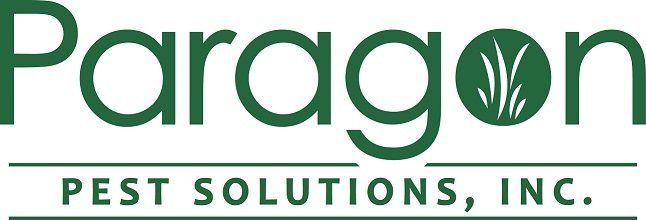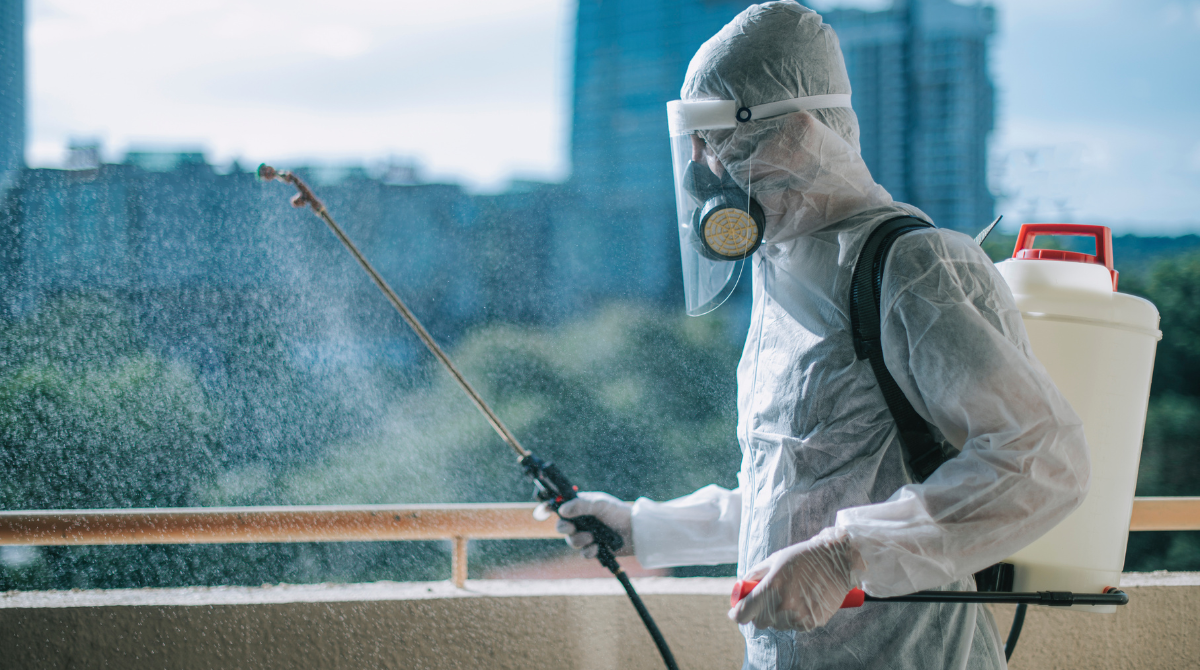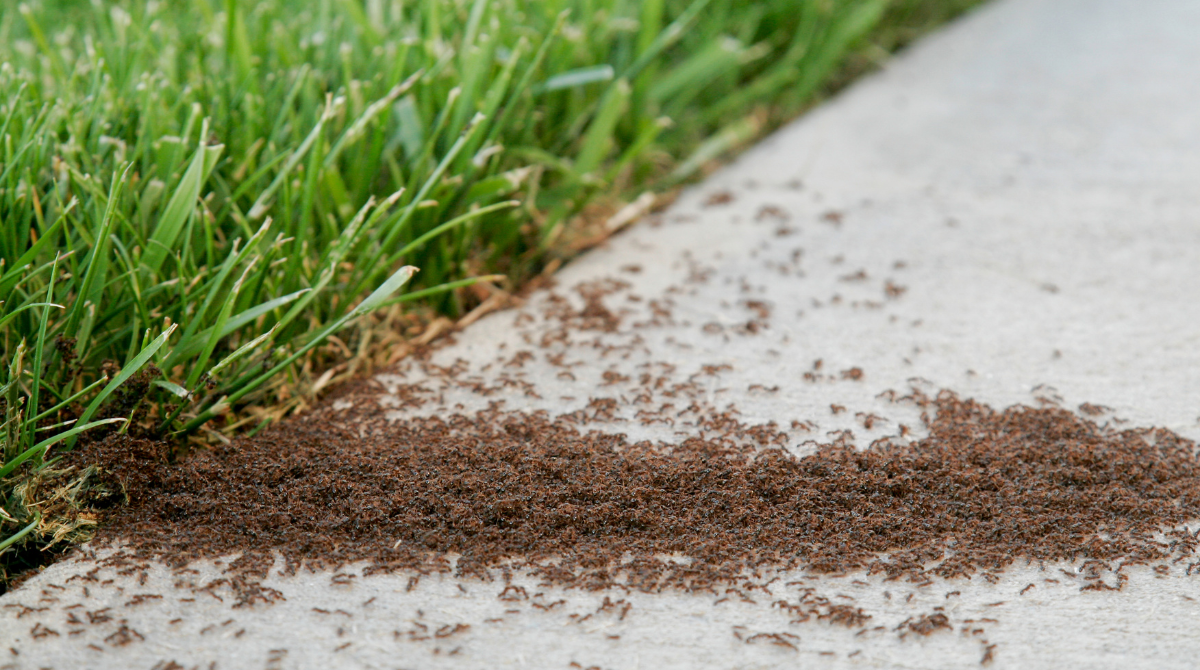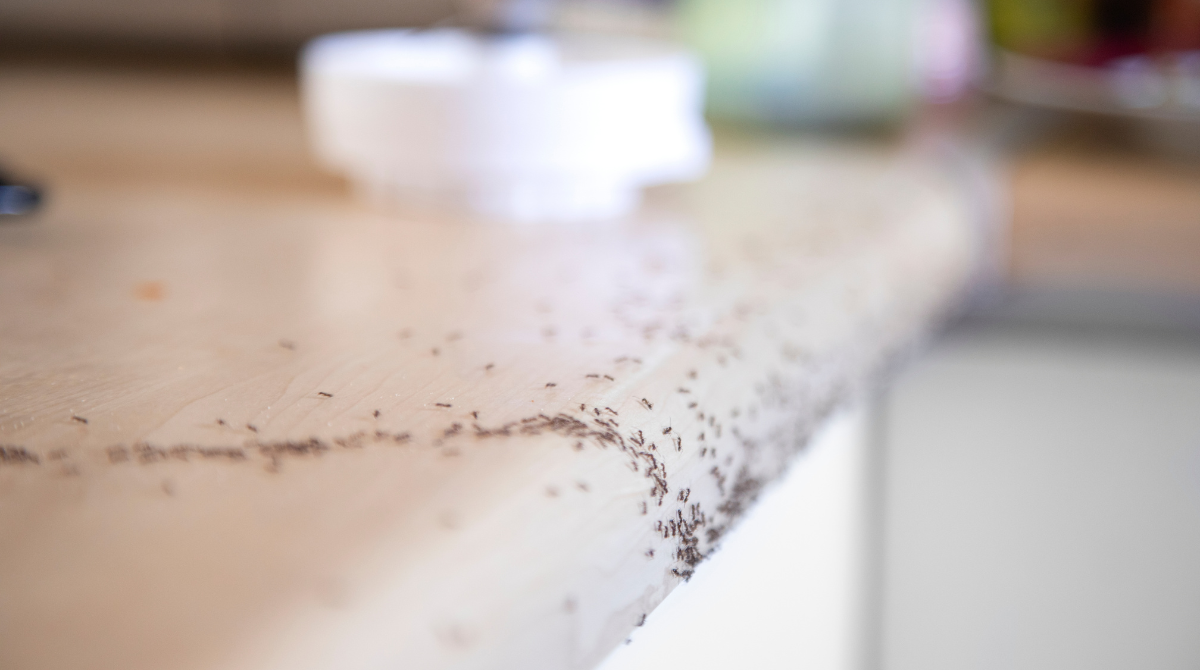Is Your Attic Pest-Proof? Preparing for Cooler Nights
As the weather starts to cool down, you might notice some new visitors trying to get into your house. These aren't the friendly kind, though. Bugs and rodents are looking for a warm place to hang out for the winter, and your home could be their next stop. It's a good idea to get ahead of this before it becomes a bigger problem. Taking some steps now can make your home less appealing to pests and harder for them to get inside. Let's look at how you can make sure your attic stays pest-free this season.
Key Takeaways
- Seal up any small holes or cracks around your house, especially where pipes or wires go in. Pests like mice can get through openings as small as a dime.
- Put screens on attic vents and chimneys, and fix any torn window screens. Make sure doors have tight sweeps at the bottom.
- Keep your attic, basement, and any damp areas dry. Check that gutters are clear so water drains away from your house.
- Clean up your yard by removing leaf piles and trimming branches that touch your house. Store firewood away from the building.
- If you suspect a pest problem, especially in the attic, it might be time to call in the pros for attic pest control.
Seal Exterior Entry Points
As the nights get cooler, it’s time to think about what might be looking for a warm place to stay. Your home’s exterior is the first line of defense against uninvited guests, and a few small gaps can make a big difference. Taking a little time now can save you a lot of trouble later.
Inspect Foundation and Siding
Walk around your house and really look at the foundation and siding. Time and weather can wear things down, creating tiny openings. Mice, for example, can squeeze through holes as small as a dime, which is pretty unbelievable when you think about it. Look for any cracks or gaps, especially where pipes or wires enter your home. Loose mortar around bricks or windows is also a common spot for pests to find a way in. It’s a good idea to check these areas at least once a year, maybe in the spring and again before fall. Fixing these small issues now stops bigger problems down the road. You can use caulk or even steel wool for smaller gaps, and for larger ones, consider using metal mesh or rodent-proofing foam. It’s about making your home less accessible.
Block Small Gaps and Cracks
Don't underestimate the size of pests. Many common invaders, like ants and spiders, can get through openings that seem too small to matter. Even a hairline crack in your foundation or siding can be an invitation. Pay close attention to areas where utilities like cable, water, or gas lines enter your house. These are often not sealed perfectly. Also, check around window frames and door frames for any signs of wear or damage. Sealing these entry points is one of the most effective ways to keep pests out. It might seem tedious, but it’s a really important step in pest-proofing your home. Think of it like patching up your own house before a storm hits.
Secure Utility Line Entry Points
Utility lines, whether they bring electricity, water, or internet into your home, create natural entry points. Where these lines pass through your foundation or exterior walls, there's often a gap. Pests can easily travel along these lines and slip inside. It’s important to seal these areas thoroughly. Using a combination of caulk and steel wool or a specialized sealant designed for pest exclusion works well. Make sure the material you use is durable enough to withstand weather. If you’re unsure about how to properly seal these points, or if you have a lot of them, it might be worth consulting with a professional. Getting these secured can prevent a lot of headaches later on, especially when you're looking for pest control visits.
Making your home less inviting to pests starts with a thorough inspection of its exterior. Small gaps and cracks, often overlooked, can serve as highways for unwanted visitors. Addressing these vulnerabilities proactively is key to maintaining a pest-free environment as the seasons change.
Protect Major Access Points
As the weather cools, critters start looking for a warm place to hang out for the winter, and your house might be on their radar. We're talking about the bigger ways they can get in, not just the tiny cracks. Think about places like your attic vents, chimney openings, and even those window screens you might have forgotten about after summer.
Install Attic Vent and Chimney Screens
Your attic vents and chimney are like open invitations for pests. Rodents, birds, and even larger insects can easily make their way in through these openings if they aren't protected. It's pretty simple, really: install sturdy mesh screens over all attic vents and your chimney opening. This is a really effective way to block them out without stopping the necessary airflow. Make sure the mesh is fine enough to keep out even small invaders but durable enough to last.
Repair Damaged Window Screens
Summer might be over, but those window screens are still working hard. A small tear or a loose edge on a window screen is all a determined mouse or insect needs to get inside. Take a good look at all your window screens. If you find any rips, holes, or areas where the screen is pulling away from the frame, fix them right away. Replacing a small section of screen or re-securing the edges is usually a quick fix that makes a big difference.
Ensure Tight-Fitting Door Sweeps
Don't forget about your doors! Even if your doors close properly, there can still be a gap at the bottom where pests can sneak in. Installing or replacing door sweeps on all your exterior doors, including the garage door, can create a solid barrier. Look for sweeps that fit snugly against the threshold. This simple addition can stop a lot of unwanted guests from entering your home, especially during those cooler months when they're actively seeking shelter.
Control Interior Moisture
You know, it's easy to forget about the inside of your house when you're thinking about pests, but moisture is a big draw for a lot of unwanted guests. Think about it – bugs and rodents need water to survive, just like we do. So, if your home has damp spots, it's basically putting out a welcome mat for them. We're talking about things like leaky pipes, especially in the basement or under sinks, and even just general dampness in areas like the attic or crawl spaces. It's not just about comfort; it's about making your home less appealing to critters looking for a cozy, humid place to hang out, especially as the weather gets cooler.
Address Leaking Pipes and Drains
This is a pretty straightforward one. If you've got a drip under the sink or a slow leak in a pipe somewhere, get it fixed. It doesn't have to be a gushing flood to attract pests. Even a small, consistent drip can create a damp environment that certain insects, like cockroaches and silverfish, absolutely love. And for rodents, a steady water source is a big plus. So, take a walk around your house, check under all the sinks, look around the water heater, and don't forget about any outdoor spigots that might be dripping. It’s worth the effort to stop those little leaks before they become a bigger problem.
Utilize Dehumidifiers in Damp Areas
Some parts of your house just tend to be more humid than others, no matter how well you seal things up. Basements and attics are common culprits. If you notice condensation on pipes or walls, or just a general musty smell, it's probably too damp. Running a dehumidifier in these areas can make a huge difference. You don't need the biggest, most industrial one; a decent-sized unit can pull a lot of moisture out of the air. Keeping these spaces dry is a simple yet effective way to make them less inviting to pests. Just remember to empty the water tank regularly, or set up a continuous drain if possible.
Maintain Functional Gutters
This one might seem a bit removed from your attic, but it's actually pretty important. Your gutters are designed to channel rainwater away from your house's foundation. If they're clogged with leaves and debris, or if they're damaged and not directing water properly, that water can pool around your foundation. This standing water can seep into your basement or crawl space, creating that damp environment we've been talking about. Plus, it can weaken the foundation itself over time. So, give your gutters a good cleaning, especially before the rainy season really kicks in, and make sure they're in good repair. It's a small maintenance task that has a big impact on keeping your home dry and less attractive to pests.
Tidy Your Outdoor Space
As the weather cools, your yard can become a highway for pests looking for a warm place to stay. Taking some time to clean up the outside of your home can make a big difference. It's all about removing the welcome mat for critters before they even think about coming inside.
Clear Leaf Piles and Debris
Don't let leaf piles and general yard clutter become a cozy hideout for bugs and rodents. These piles offer shelter and a place to nest. Get rid of them, especially near your home's foundation. Think of it as decluttering your home's exterior.
Trim Overhanging Branches
Trees and shrubs that touch your house can act like a bridge for pests. Squirrels, mice, and even insects can use these branches to get onto your roof or into openings you might not even know are there. Keep branches trimmed back at least a few feet from your walls and roofline. This makes it harder for them to reach your home.
Store Firewood Appropriately
Firewood is a favorite spot for many pests, including termites, ants, and spiders. If you keep firewood near your house, you're basically inviting them in. Store your firewood at least 20 feet away from your home and elevate it off the ground. This helps keep the wood dry and makes it less appealing for pests to set up shop. A simple rack can do wonders.
Keeping your outdoor areas clean and organized is a simple yet effective way to prevent pests from considering your home their winter residence. It's about making your property less attractive and harder to access for unwanted guests.
Secure Food Sources
As the weather cools, pests start looking for a warm place to stay and, more importantly, something to eat. Your home can become a prime target if food is easily accessible. It’s time to get serious about how you store your food, both inside and out.
Clean Kitchens and Pantries Meticulously
Think of your kitchen and pantry as the ultimate buffet for any critter that manages to sneak in. Crumbs on the counter, spills on the floor, or even a sticky spot on the cabinet door can be a feast for a mouse. Regularly wiping down surfaces, sweeping floors, and cleaning out cabinets is non-negotiable. Don't forget to clean under appliances like the toaster and microwave, where crumbs love to hide. Even pet food left out overnight is a major draw. Make it a habit to put pet bowls away or clean them after your furry friends are done eating.
Use Airtight Containers for Pantry Items
Those flimsy cardboard boxes and plastic bags your cereal, pasta, and flour come in? They're practically an open invitation. Pests can chew right through them. The best defense is to transfer all dry goods into sturdy, airtight containers. Glass or thick plastic containers with secure lids are ideal. This not only keeps pests out but also helps keep your food fresher for longer. It’s a simple step that makes a big difference in preventing unwanted visitors from raiding your pantry.
Manage Outdoor Trash Receptacles
Your outdoor trash cans are a beacon for pests. The smells wafting from them can attract rodents and other critters from quite a distance. Make sure your trash cans have tight-fitting lids and that they are always closed securely. If possible, store your trash cans away from the direct entrance of your home, perhaps in a garage or a designated bin area. Regular trash pickup is key, but in between pickups, keeping those lids shut tight is your best bet. Consider using bins with pest-resistant features if you live in an area with a high pest population. This is a simple way to protect your home from the outside in, and you can find some great options for pest-resistant bins online.
Inspect Items Brought Indoors
As the weather starts to cool down, it's common to bring things inside that have been stored in the garage, shed, or even left outside. This is a prime time for pests to hitch a ride into your home. Think about those Halloween decorations you're pulling out of storage, or maybe some garden tools you're tucking away for the winter. These items can easily carry insects, spiders, or even rodent nests with them.
Examine Outdoor Decorations
Before you unbox those spooky figures or festive lights, give them a good once-over. If they've been sitting in a garage or basement all year, they might have become a temporary home for something unwelcome. It's best to do this inspection outside. A quick shake-out or a wipe-down can prevent a lot of trouble later. This is especially true for anything with nooks and crannies where pests like to hide.
Check Potted Plants and Garden Tools
Bringing in potted plants from the patio? They can harbor all sorts of critters, from tiny insects in the soil to spiders making webs. Garden tools, especially those with wooden handles or crevices, can also be a hiding spot. A gentle rinse or a thorough wipe-down of these items before they come inside can make a big difference. Don't forget to check the undersides of pots and the handles of tools.
Rinse or Wipe Down Stored Items
Basically, anything that has been outside and is now coming in needs a look. This includes things like outdoor furniture cushions, sports equipment, or even children's toys that have been left out. A simple cleaning can remove eggs, larvae, or adult pests. It’s a small step that significantly reduces the chances of introducing an infestation. Remember, pests are looking for a warm place to stay as the temperatures drop, and your home is a prime target. Taking a moment to inspect these items is a smart move for preventing fall invaders.
The goal here is to be thorough but not overly complicated. Think of it as a quick check-up for your belongings before they move into their winter quarters inside your house. It’s much easier to deal with a stray spider on a decoration outside than to find a whole nest inside your living room.
Address Attic Vulnerabilities
Your attic might seem like a forgotten space, but it's often a prime spot for pests looking for a cozy winter hideout. Regularly inspecting this area is key to catching problems early.
Check Attic Insulation for Trails
Think of your attic insulation as a giant, fluffy carpet. When tiny feet or larger bodies move through it, they leave behind clear signs. Blown-in insulation, in particular, is great for showing these trails. If you see winding paths, almost like a snake has slithered through, it's a pretty good indicator that rodents have been making themselves at home. The width and depth of these trails can even give you a clue about the size of the critter. A narrow, shallow trail might suggest mice, while a wider, deeper one could mean larger animals like rats or squirrels are the culprits.
Identify Signs of Rodent Activity
Beyond just trails in the insulation, keep an eye out for other clues. Droppings are a dead giveaway, but sometimes pests are sneaky and clean up after themselves, or they might only be active at night and leave the mess outside. Look for gnaw marks on wooden beams or electrical wires – this is a big red flag, especially for rodents who need to keep their teeth trimmed. You might also hear scratching or scurrying noises, particularly during quieter hours. Don't dismiss these sounds as just the house settling; they could be your attic's uninvited guests.
Reinforce Vulnerable Attic Vents
Attic vents and chimney openings are common entry points that are often overlooked. Pests, especially larger ones like raccoons or squirrels, can easily rip through flimsy screens or pry open loose coverings. It's a good idea to check these areas and make sure they're secure. Consider reinforcing them with sturdy materials like galvanized steel mesh. This makes it much harder for pests to chew their way in and create their own access points. Remember, even small openings can be an invitation for smaller critters, so a thorough check is always worthwhile.
Understand Pest Behavior
As the weather cools down, you might notice more critters looking for a cozy spot to ride out the colder months. It's not just a coincidence; many pests are programmed to seek warmth and shelter as the seasons change. Understanding their typical movements and what draws them in can really help you keep them out of your attic and home.
Recognize Seasonal Pest Movements
Think of it like this: when the leaves start falling and the air gets crisp, it's a signal for many insects and rodents. They've spent the warmer months outdoors, but as temperatures drop, their priorities shift. They start scouting for places that offer protection from the elements and a steady supply of food. Your attic, with its relatively stable temperature and darkness, can look like a five-star hotel to them. Rodents, in particular, become more active in seeking indoor shelter once the first frost hits. It’s a natural instinct to find a safe place to nest and survive the winter.
Identify Rodent Attraction Factors
Rodents aren't just looking for any old place; they're attracted to specific things. A primary draw is easy access to food and water. Even small crumbs left on counters or spills in the pantry can be a beacon. They also need places to hide and build nests, which is why cluttered areas, whether in your attic or basement, are appealing. Beyond that, they're looking for warmth. Any small opening that lets in a draft can also be an entry point for them, and the heat escaping from your home makes it an attractive target. Think about it: if you were a tiny mouse, where would you go on a cold night?
Differentiate Pest Entry Signs
Spotting the signs of pests is key to stopping them. It's not always obvious, but there are clues. You might hear faint scratching or scurrying sounds, especially at night, which often points to rodents in the walls or attic. Droppings are another big giveaway – small, dark, rice-shaped pellets usually mean mice, while larger, capsule-shaped ones could indicate rats. Gnaw marks on wires, wood, or even stored items are also a strong indicator of rodent activity. For insects, you might see trails of ants, shed skins from spiders, or notice a musty odor that suggests a larger presence. Paying attention to these subtle signs can help you catch a problem before it gets out of hand.
Keeping an eye out for these behaviors and signs is like having a heads-up from the pests themselves. It tells you where they might be trying to get in and what they're looking for once they're inside. This knowledge is your first line of defense.
Consider Professional Attic Pest Control
Sometimes, even with the best DIY efforts, pests can still find their way into your attic. If you've tried sealing entry points and tidying up, but still suspect a problem, it might be time to call in the pros. Recognizing when a situation is beyond your scope is a sign of smart homeownership.
Recognize Signs of Infestation
It's easy to dismiss strange noises in the attic as just the house settling or the wind. However, persistent scratching, scurrying, or gnawing sounds, especially at night, are often clear indicators of rodent activity. You might also notice droppings – small, dark pellets are a common sign of mice or rats. Look for chewed wires, damaged insulation (they love to burrow for nests!), and unusual odors. These aren't just minor annoyances; they're signals that unwanted guests have moved in and are making themselves at home.
Evaluate Damage Potential
Pests in the attic aren't just a nuisance; they can cause significant damage. Rodents, for instance, have a habit of chewing on electrical wires, which creates a serious fire hazard. They can also damage insulation, reducing your home's energy efficiency and leading to higher heating bills. Beyond rodents, insects can infest stored items or even damage the structure of your home over time. The longer an infestation goes unchecked, the more costly the repairs can become. It's often cheaper in the long run to address the problem early.
Consult Pest Control Experts
When you've identified signs of a pest problem and understand the potential damage, contacting a professional pest control service is the next logical step. Companies like Poulin's Pest Control have the tools and knowledge to accurately identify the type of pest, locate their nests, and implement effective treatment plans. They can also advise on preventative measures to keep pests from returning. Don't hesitate to reach out for a consultation if you suspect an infestation; they can help determine the right course of action for your specific situation and provide peace of mind. You can find services specializing in pest and rodent control throughout many regions.
Dealing with pests in your attic can be a real headache. These unwanted guests can cause damage and create unhealthy living conditions. Instead of trying to handle it yourself, why not let the experts take care of it? Our team is skilled at finding and removing pests from attics safely and effectively. Ready to reclaim your peace of mind? Visit our website today to learn more and schedule your inspection!
Don't Let Pests Crash Your Cozy Fall
So, as the leaves start to turn and the air gets a little crisper, it's the perfect time to do a quick check-up on your home. Think of it like getting your house ready for a long winter nap. Taking a little time now to seal up those tiny cracks, check your screens, and clear out any clutter around the outside can make a big difference. It's way easier to keep pests out in the first place than to deal with them once they've decided your attic looks like a five-star hotel. A little bit of effort now means a more peaceful, pest-free fall and winter for you and your family. Happy home prepping!
Frequently Asked Questions
Why do pests try to get into my house when it gets colder?
As the weather cools down, bugs and rodents look for warm, safe places to spend the winter. Your house, with its cozy warmth and shelter, becomes a very attractive spot for them. They're basically trying to find a good place to survive the cold season.
What are the most common ways pests get inside?
Pests can sneak in through tiny openings. Think about cracks in your foundation, gaps around pipes or wires that go into your house, or even holes in your attic vents and chimneys. Rodents, like mice, can fit through holes as small as a dime! Also, damaged window screens or doors that don't close tightly are easy ways in.
How can I check if pests are already trying to get in?
You should carefully look around the outside of your house. Check your foundation, siding, and where pipes and wires enter your home for any small cracks or holes. Inside, especially in your attic, look for signs like droppings, gnaw marks on wood or wires, or trails in the insulation. Hearing noises in the attic at night can also be a clue.
Besides sealing entry points, what else can I do?
Keeping your home dry is important because many pests are attracted to moisture. Fix any leaky pipes or drains. Also, make sure your gutters are clean and directing water away from your house. Keeping your yard tidy by clearing leaf piles and trimming branches that touch your house also helps, as these can be highways for pests.
How does food attract pests?
Pests need food to survive, just like we do. Crumbs on the floor or counter, open boxes of food in your pantry, or even pet food left out can be a feast for them. Keeping your kitchen clean and storing food in airtight containers makes it much harder for pests to find a meal.
What should I do with things I bring in from outside?
When you bring things like holiday decorations, garden tools, or potted plants inside from storage, check them carefully first. Pests or their nests can hide on these items. A quick wipe-down or rinse before bringing them indoors can prevent them from moving in with your belongings.
What if I already suspect a pest problem?
If you see signs of pests, like droppings, gnawing, or hear noises, it's best to act quickly. Check your attic insulation for trails, which can show where pests have been moving. If you think you have an infestation or are unsure, it's a good idea to call a professional pest control expert. They can identify the pests and recommend the best way to get rid of them and prevent them from coming back.
Are attics particularly vulnerable to pests?
Yes, attics can be a favorite spot for pests. They offer shelter and are often less disturbed than other parts of the house. Rodents especially like to nest in attics, where they can chew on wires and insulation. It's important to check your attic vents for screens and look for any signs of activity, like trails in the insulation or droppings.










